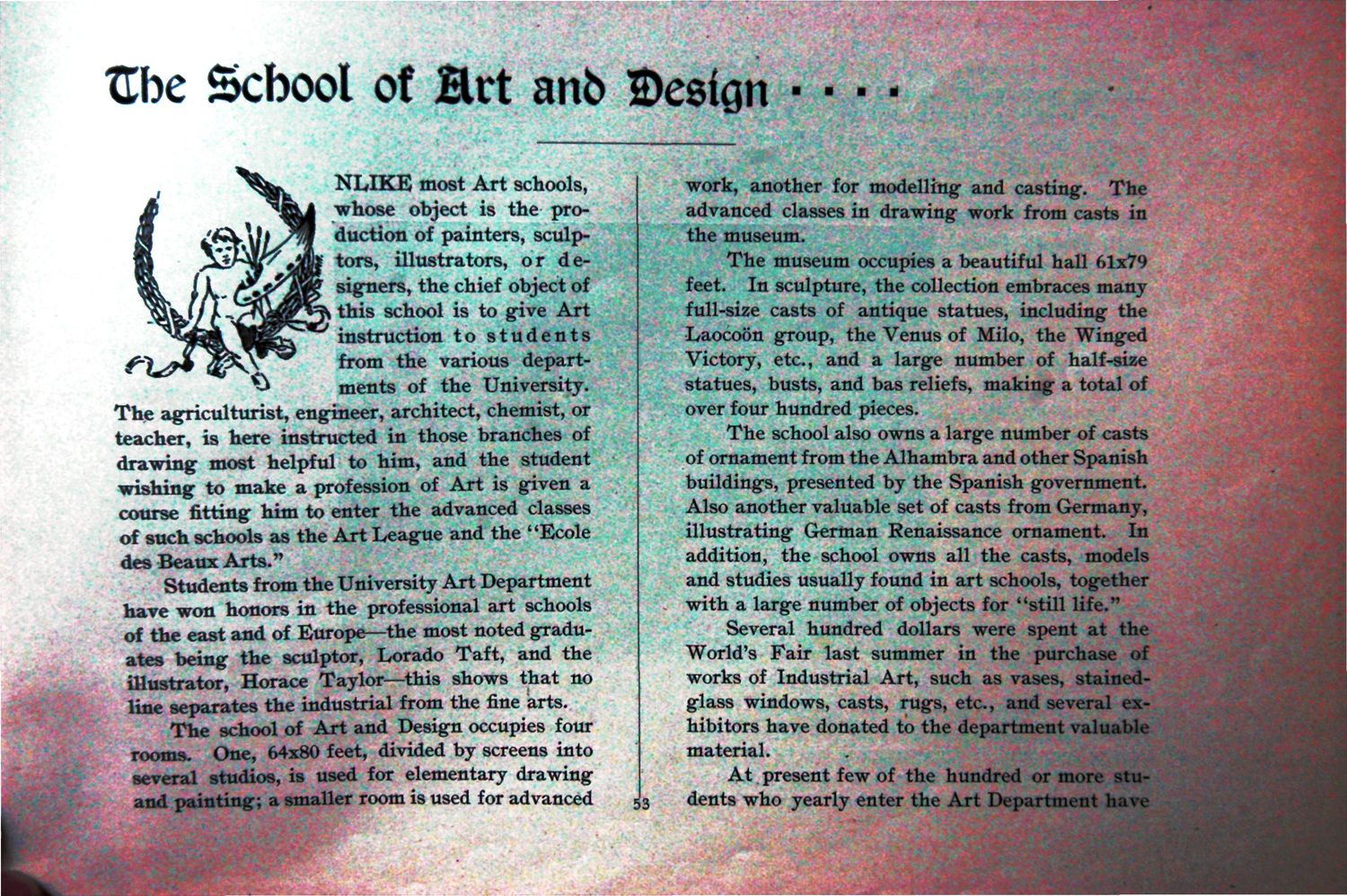| |
| |
Caption: Illio - 1895
This is a reduced-resolution page image for fast online browsing.

EXTRACTED TEXT FROM PAGE:
XTbe Scbool of Hrt anb EDesign r • V NLIKE most Art schools, whose object is the production of painters, sculptors, illustrators, o r d e signers, the chief object of this school is to give Art instruction t o s t u d e n t s from the various departments of the University. The agriculturist, engineer, architect, chemist, or teacher, is here instructed in those branches of drawing most helpful to him, and the student wishing to make a profession of Art is given a coarse fitting him to enter the advanced classes of such schools as the Art League and the ' 'Ecole * des Beaux Arts." Students from the University Art Department have won honors in the professional art schools of the east and of Europe—the most noted graduates being the sculptor, Lorado Taft, and the illustrator, Horace Taylor—this shows that no line separates the industrial from the fine arts. The school of Art and Design occupies four run One, 64x80 53 several studios, is used for elementary drawing and painting; a smaller room is used for advanced work, another for modelling and casting. The advanced classes in drawing work from casts in the museum. The museum occupies a beautiful hall 61x79 feet. In sculpture, the collection embraces many full-size casts of antique statues, including the Laocoon group, the Venus of Milo, the Winged Victory, etc., and a large number of half-size statues, busts, and bas reliefs, making a total of over four hundred pieces. The school also owns a large number of casts of ornament from the Alhambra and other Spanish buildings, presented by the Spanish government. Also another valuable set of casts from Germany, illustrating German Renaissance ornament. In addition, the school owns all the casts, models and studies usually found in art schools, together with a large number of objects for "still life." Several hundred dollars were spent at the World's Fair last summer in the purchase of works of Industrial Art, such as vases, stainedglass windows, casts, rugs, etc., and several exhibitors have donated to the department valuable material. At present few of the hundred or more students who vearlv enter the Art Department ha\
| |